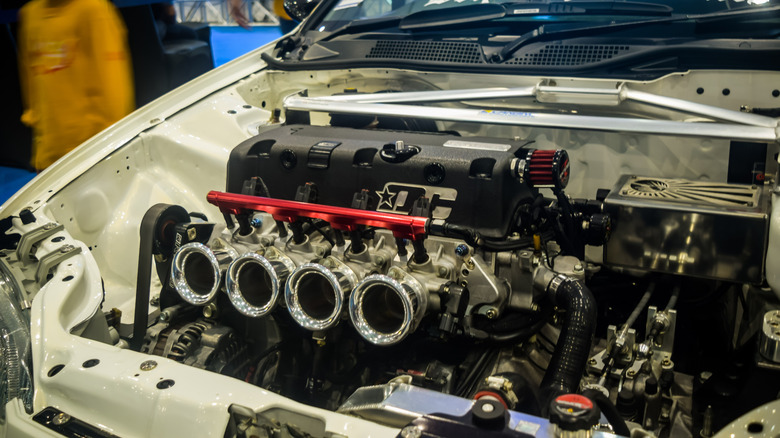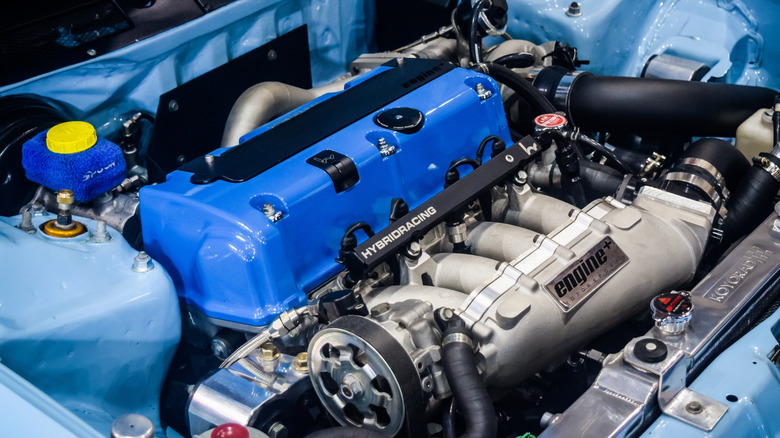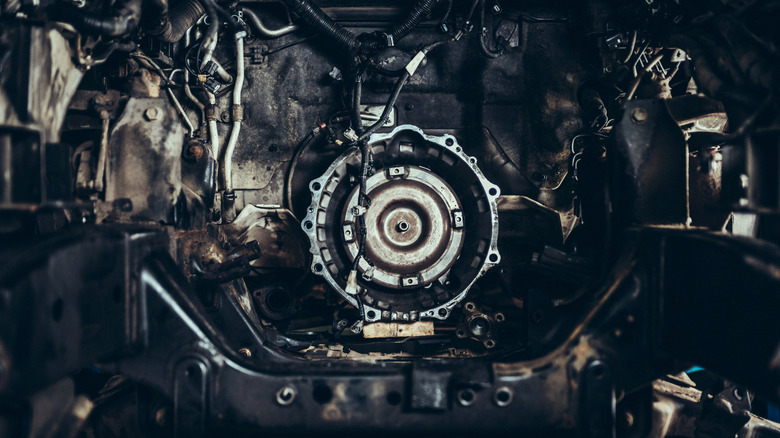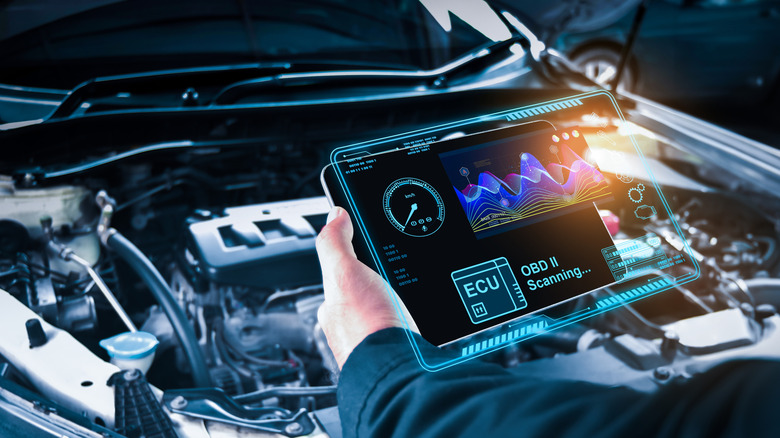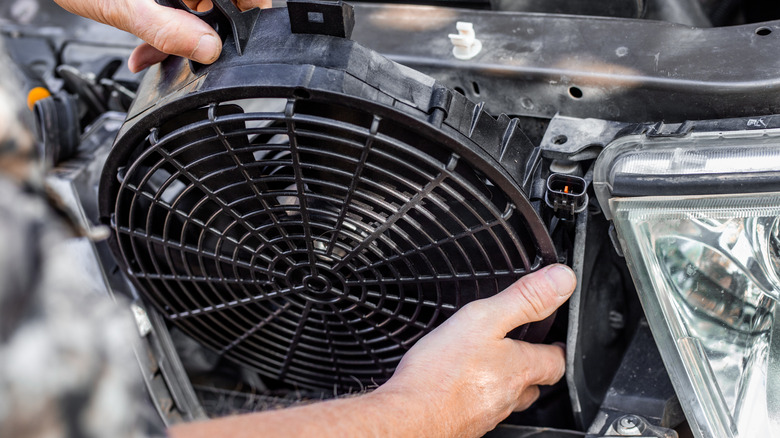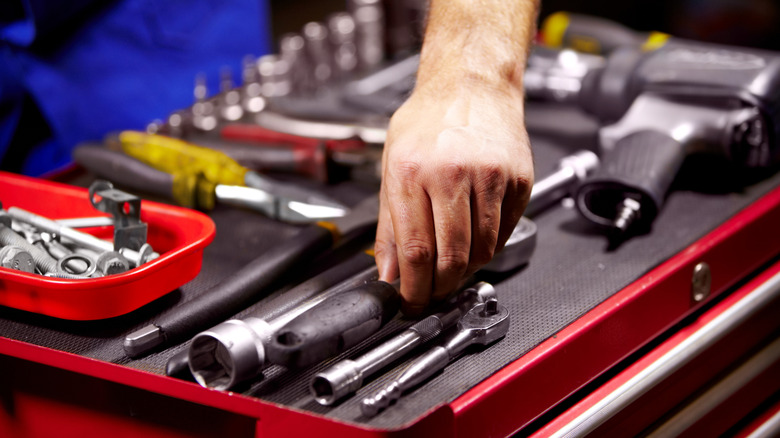5 Things You Need To Know Before K-Series Engine Swapping Your Car
Swapping a Honda K-Series engine, commonly known as K-swap, is among the most popular car modifications among enthusiasts. It involves replacing your car's factory engine with a K-Series engine, whether as an upgrade for track days or to improve its overall street performance. Considering that the K-Series powertrain has a great power-to-weight ratio, tuning potential, and good aftermarket support with lower parts prices, a K-swap is something worth considering, even if you're a rookie in the mod realm.
As someone who has spent years writing and assisting professionals on challenging K-Series builds, I can say that while K-swaps are exciting, they're far from simple. The process of placing an engine into another chassis involves a lot of work. The truth is that successful K-swaps require a deep understanding of the work involved, technical skills, and, most importantly, a good budget.
While K-Swaps are common in Honda Civic EG, EK, and Integra DC2 96-01 models, they are not limited to Hondas. With the right tools and willpower, you can perform a K-Swap on virtually any chassis. But swapping requires more than simply fitting an engine block into the bay. Aside from the engine, you will need components that'll work with it, such as cooling systems, transmission mounts, wiring, and a good budget to get things moving. Without a solid understanding of the technical requirements involved, a slight mistake or oversight could cost you months or even years of work.
Choosing the right K-Series engine
The first step in any K-Swap is selecting the right K-Series engine for your project. When they started rolling off the assembly line under the hood of the Honda Integra Type R and the Civic in 2001, the K-Series engines gained a reputation for reliability. By the time they arrived in the CR-V, Civic Si, and Acura RSX in the U.S., their popularity was undeniable. For instance, Honda sold 76,535 units of the Si alone in 2002. The K-Series lineup includes several engines and variants, so it's important to pick options that align with your budget. The most highly recommended options for K-Swapping are the K20 and K24 engines.
The K20 engine is a 2-liter inline four-cylinder used from 2000 to 2015 in cars like the Accord and the Civic. It is ideal for track builds or anyone seeking a traditional Honda VTEC experience. The most sought-after choices for a K20 engine swap are the K20A2 (from the Civic EP3 Type R) and K20A (Integra DC5 Type R), owing to their tunability and availability on the aftermarket.
The K24 is the most popular engine for its high-revving performance, high displacement, and increased torque. With regular maintenance, it can last up to 200,000 miles, making it a very reliable option. Popular versions of the K24 engine are the K24A2 (from the Acura TSX) or K24Z7 (from the Civic Si). If you're seeking a better performance package, you can combine the K24 bottom-end and the K20 head (called a K20/K24 Frankenstein build), if you have a more flexible budget.
Consider transmission compatibility and mounts
Once you've narrowed down your K-Swap engine, you should pick components that will transfer the power to the wheels without compromising reliability or performance. A successful swap should include the right transmission, driveshafts, and engine mounts. On the transmissions, you can pick between OEM Honda transmissions like the five-speed or six-speed units that pair with K-Series engines or the aftermarket short shifters that offer precise gears. Pick the six-speed manual from the Honda Civic EP3 if you work on a leaner budget. If you want something that will reduce throw distances, pick the Hybrid Racing V3 or K-Tuned short shifters.
If you're K-Swapping, the stock driveshafts in your car won't fit a K-Series engine due to differences in spline and length. As with transmissions, you have a lot of driveshaft options. You could go for K-Swap-Specific driveshafts from brands like Hasport, which offer bolt-in solutions for the Civic EK or Integra DC2 chassis. If you want to keep the costs low, use hybrid options that combine K-Series driveshafts with B-Series outer CV joints.
Engine mounts keep the K-Series engine secure in the OEM mounting points of the chassis, while keeping everything aligned with the rest of your components. You could go for K-Swap-specific mount kits or use urethane ratings, which come in Street (U62a) to Race (U70a or U88a) options.
Wiring and electronics
To integrate the K-Series engine's systems into your car setup, the harness, gauges, and engine control unit (ECU) should be wired correctly. Connecting the engine to the loom or ECU will require a wiring conversion harness. You can find ready-to-go harnesses from brands like Hybrid Racing and K-Tuned. These are mostly tailored for Honda cars like the Integra DC2 and the Civic EK. You may need customized looms if you're working with a non-Honda chassis.
Because the ECU controls functions like performance, emissions, and transmission, it's essentially the central point of your K-Swap, or brain, if you will. Tuning an ECU is one of the ways to boost your car's horsepower, and, in this case, it'll also help you control aspects like spark timing and fuel delivery. The aftermarket has several K-Swap options, like the standalone Haltech Elite 1500, which offers better tuning capabilities. You could also pick a Stock ECU, which requires an immobilizer bypass. A programmable ECU, like the Hondata K-Pro, offers tunability and adapts to the K-Series engine well too.
While older gauges require adapters to work with K-Series data, consider upgrading to a digital dash for real-time data and customizable warnings. Either way, make sure to double-check all wires and connections to prevent inaccurate readings.
Cooling and exhaust systems
For an engine to work effectively and avoid overheating, you have to install cooling and exhaust systems. When swapping in a K-Series engine, there will be differences in engine placement and design. To match your new setup, you'll need to modify these systems.
Since the K-Series engine is normally mounted further at the front of the engine bay, you'll need to reposition the radiator to the passenger side in most swaps. There are several aftermarket K-Swap-specific radiators designed for this repositioning, which have modified ports. Also, the K-Series sits closer to the radiator, You'll need a slim radiator fan.
With the new subframe position, the stock manifold won't fit. You'll need an aftermarket manifold, like the K-Tuned Big Tube Manifold and Tegiwa or Skunk2 manifolds. Generally, a manifold with a 3-inch exhaust system will improve exhaust flow. Also, a custom air intake is necessary for the front-facing throttle body.
Budgeting and tools
Before diving into your K-Swap project, you have to understand how much it will cost and the right tools to use. Everything from the mounts and the ECU to the engine and specialty tools to get the job done will need a budget. The total cost of a K-Swap varies on the parts you use, the condition of the donor car (the car providing the engine), and whether you decide to go for OEM parts or aftermarket components. On average, a K20 engine swap will run about $6,000, but the real cost of K-Swaps can be higher if you want every part to be top-of-the-line.
Expect to pay between $2,500 and $3,500 for a K20 or K24 engine and transmission from a donor car like the EP3 or DC5. A new engine will cost upwards of $5,000. You will spend an additional $1,000 to $3,000 on parts like engine mounts, exhaust systems, and wiring harnesses. If you're not technically skilled to DIY Swap yourself, labor will probably range from $1,000 to $2,500 depending on the complexity of the job.
A K-Swap requires a variety of tools, some of which may already be in your garage and others that need purchasing or renting. You will need an engine hoist, a torque wrench, an impact gun, and a socket set, with cutting and welding tools.
